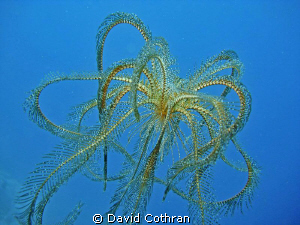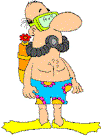|
|
|
Underwater Photo Location: Perch Island, South Wall
How Hot is this Dive Site? click a star to rate it
A steep rock wall with large ledges dropping to unexplored depths. Heavily ice-scoured above 20M, this site is nonetheless one of the best spots in the area to look for large current-feeding species like Promachocrinus and large sea cucumbers. Water temperature is usually around 28-30F (-2 to -1C) in December and January. Facts about Perch Island, South Wall| Dive types |   |
 by David CothranA large crinoid, Promachocrinus kerguelensis; fairly common around the Antarctic Peninsula. This individual is about 80cm (32in) across, swimming with a beautiful coordinated motion of its arms.
 Share your knowledge... Share your knowledge...
|